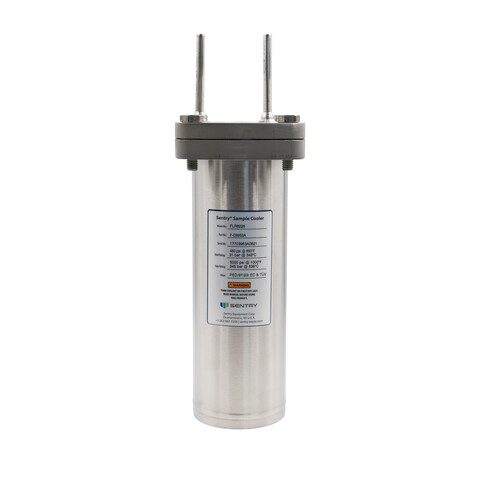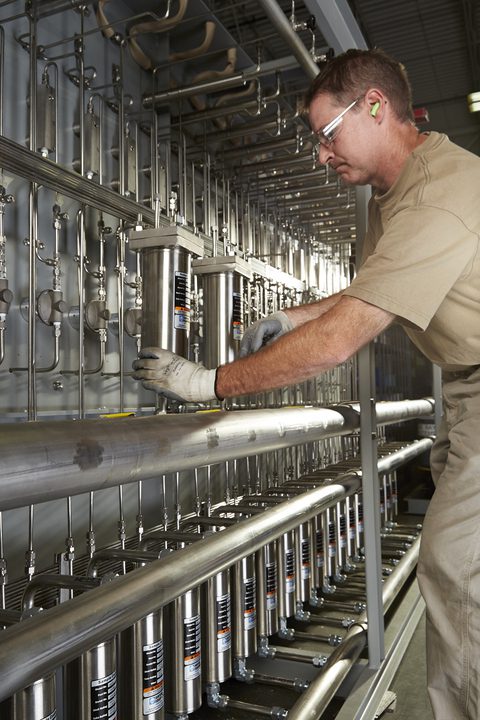Preparing Steam and Water Analysis Equipment for Summer Heat
While the effects of extreme summer weather are one thing, even regular summer weather can wreak havoc on steam and water analysis systems (SWAS) without adequate preparation. Summer sunshine and increased temperatures can bring higher heat loads and increased cycling rates that put even more stress on steam and water sampling and related equipment, greatly increasing risk of thermal issues and prolonged downtime. However, there are several simple solutions plant operators should consider implementing before the summer months arrive in order to protect their plants from the costly, yet highly preventable, consequences of being unprepared.
The Problem: Keeping Cooling Water Cool
In a steam and water analysis system, a sample cooler is essential to maintaining the safety and representativeness of the sample. The Electric Power Research Institute (EPRI), American Society for Testing and Materials (ASTM), and American Society of Mechanical Engineers (ASME) all recommend cooling water samples to 77F (25C), but the summer heat can make maintaining proper cooling capacity a much bigger challenge.
A sample cooler is simply a small shell and coil heat exchanger (Figure 1). In order to cool a sample to the ideal temperature, the sample flows through the tube side of the cooler, and the cooling fluid—usually water—flows through the shell side of the cooler. Once cooled, the sample is either taken to a laboratory for analysis or piped to online process instrumentation for continuous monitoring of certain properties such as conductivity, pH, or chemical constituents. This initial one-step cooling process is known as primary cooling.

However, as the environmental temperature rises during the summer, so does the temperature of cooling water. In extreme cases, cooling water can get up to 40F higher than its ideal temperature. As a result of hotter cooling water, the temperature of the sample itself significantly increases above its ideal temperature. Analyzers must attempt to compensate high temperature readings to the 77F standard, which can result in deviations in accuracy of the sample.
The Solution: Secondary Cooling Configuration
A secondary cooling configuration, or a two-stage cooling process (Figure 2), is recommended by ASME and EPRI, and is a necessity when higher summer temperatures render primary (or rough) cooling insufficient. Without a secondary cooling configuration, data becomes more questionable and less repeatable the further away the cooling water and the sample get from the reference temperature of 77F.

Most plants already have a two-stage cooling process in place, but it is not uncommon for older plants to rely solely on rough cooling. By introducing a secondary cooling configuration to a SWAS, the sample is first cooled using plant cooling water, then uses a closed loop of cooling water controlled by mechanical refrigeration. The addition of a two-stage cooling process provides backup during the summer months, ensuring that temperature increases don’t compromise the safety and representativeness of the sample.
Increased Cycling Rates, Increased Uncertainty
Combined cycle power generation has evolved into a bridge technology as the U.S., and much of the world, transitions away from coal-fired units to renewables and other low-carbon technologies. Today, many commercial power plants frequently cycle to and from renewable energy sources depending on varying plant loads and availability.
However, these frequent cycling operations are something that many plants weren’t designed for. Without proper SWAS maintenance, cycling often leads to iron transport and fouling, evidence of increased corrosion, and possible equipment failure. A common tell-tale sign of this phenomenon in combined cycle units is a black sandy substance in the sample sink.
With that in mind, the stakes are much higher during the summer months as many plants tend to cycle more due to the increased availability of renewable energy sources during the summer. Since the availability of renewable energy sources is constantly fluctuating, plant operators have no way to anticipate how long the plant may be cycled off. If a plant has to come offline for an undetermined period of time—whether it’s during the cycling process itself or to service failing equipment as a result of increased cycling rates—additional chemistry challenges may arise.
The Problem: Idle Analyzers
When SWAS equipment has to sit offline for extended periods of time, the analyzer cells pH, sodium, and silica will go dry. If these analyzers sit dry, when the plant starts back up, the equipment will not function properly until serviced, leaving the plant “chemistry blind” during the next startup.
The Solution: Automated Flush Function
Ensuring proper lay up of these instruments is critical. There are a few solutions available to prepare for the summertime.
One option is to have all of the affected probes removed, submerged in a buffer solution or condensate to help them stay wet, and reinstalled. However, this solution requires manual intervention and is difficult to plan for if operational schedules are variable or unknown.
When it comes to SWAS equipment maintenance, the most effective solutions are proactive solutions. One of the most popular and innovative remedies is to implement an automated flush function to the SWAS panels. By adding an automated flush function, plants can run water through their analyzers even when the plant is offline to ensure the analyzers stay in “hot standby”—minimizing the risk of chemistry issues on the next plant startup.
Conclusion
The summertime always presents new challenges as renewable energy sources are readily available and temperatures are sure to heat up. Steam and water analysis systems have a number of battles to fight in the summer months, so early preparation is crucial to guaranteeing plant operations can continue safely and without interruption.
—This article was contributed to POWER by Sentry Equipment.